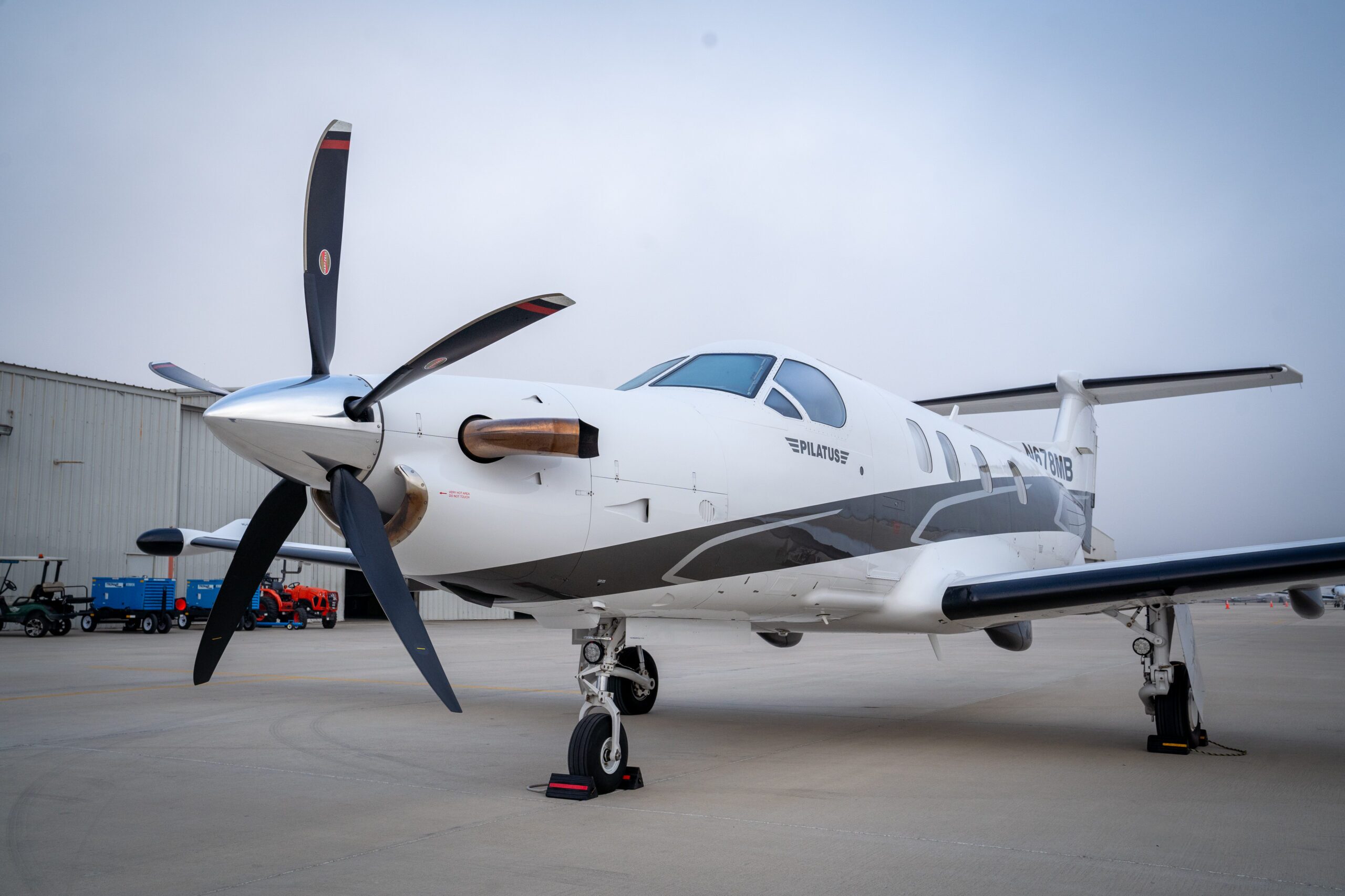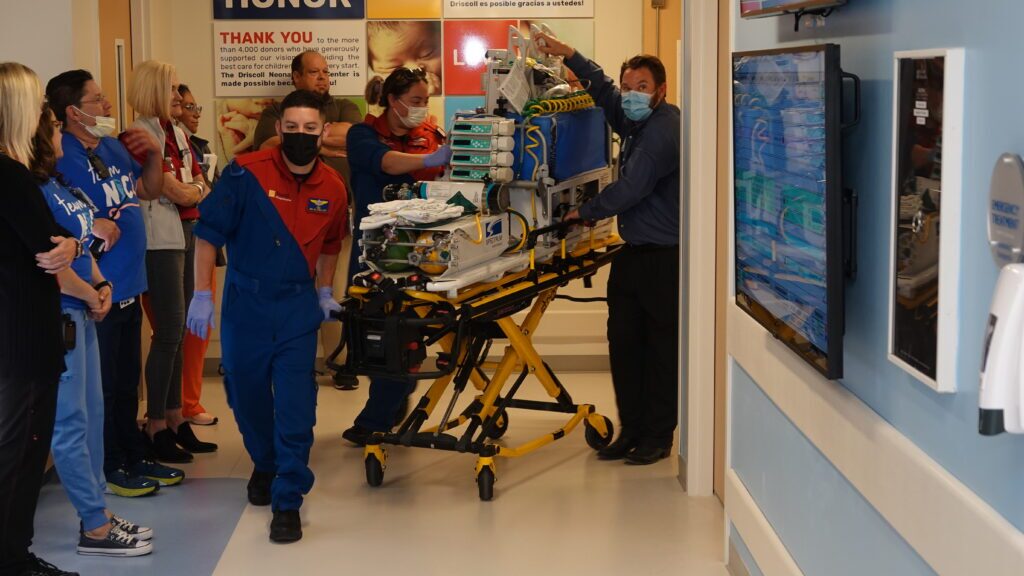
Pilot Javier Garcia still remembers the early Texas morning when he got an urgent call.
“I was on the phone with the hospital, and they needed a surgeon back in Corpus for an emergency surgery,” he said.
That call set his day in motion.
As he prepped his aircraft at dawn, Garcia felt the weight and wonder of his role. “It is such an awesome feeling to be a conduit — helping to transport these doctors and medical staff so that kids get the care they need,” he explained.
For Garcia, each flight carries a story, and each takeoff is a promise to reach those who need it most.
Every weekday morning, several small planes take off from Corpus Christi to serve South Texas. Driscoll Children’s Hospital uses these aircraft to move doctors, nurses, surgeons and other key medical staff and resources across a sprawling 33,000-square-mile region.
For many families, a long, grueling drive for care would be the norm. Instead, the hospital brings expert help directly to them. Driscoll’s fleet flies to key locations such as McAllen, Harlingen, Laredo, Victoria and even El Paso.
“On Mondays, we have about four flights,” Garcia explained. “On most other days, we fly three, sometimes two. Every flight matters.”
Some trips are quick — a 30-minute hop to a nearby Driscoll clinic — while one flight to El Paso lasts two hours and 30 minutes. But regardless of the length, every journey is planned carefully to make sure South Texas kids have access to critical, lifesaving care.
Reaching rural communities
For many rural communities in South Texas, the nearest hospital can be many miles away. In these small towns, specialty care is often hard to come by.
“I know the area we service is larger than some states in the U.S.,” Garcia pointed out. “For many of these communities, having a plane come to you is a game changer.”
Rural families often struggle with a lack of local physicians and specialists. They may have to travel for hours, or even days, to reach proper care.
Driscoll Children’s Hospital turns that challenge on its head. By flying in top doctors and nurses, the program ensures that even the most isolated communities have access to critical services. For these families, a plane landing near their town is more than just a flight — it is a lifeline that brings hope and healing.

How the program works
The physician plane program started in 2000 with two planes. Over time, the hospital saw the value in having a reliable air transport service and would eventually increase the number of planes in operation and contract Sterling Air Service to manage the physician transport program, explained Garcia.
Today, Driscoll uses six planes for its unique mission — a Beechcraft King Air 200, a King Air 90 and four Pilatus PC-12 aircraft. This program, like other Driscoll initiatives, is supported through philanthropy.
As lead pilot, Garcia does more than just fly the planes, he also handles scheduling, which often involves juggling many variables.
“Driscoll provides a list of the passengers and where they need to go, and I basically play Tetris with planes and pilots to make everything work,” Garcia said with a smile.
But he knows the work is serious. And his days start early, with aircraft prepped and flights ready to depart by 7:45 a.m. By 8:30 a.m., the planes are at their destination, and doctors are soon headed for clinics and hospitals that serve the region’s rural corners.
Behind every flight is a flurry of activity. Garcia uses several spreadsheets on his laptop to track flight times, check on aircraft maintenance and keep in constant touch with hospital staff.
Sometimes, a surgeon must be brought back to Corpus Christi in a hurry. “We get approval and fly that surgeon back to Corpus for the day,” Garcia said. “Without our plane and these resources, that wouldn’t happen.”
It is a delicate balance of timing and trust that makes each flight possible.
And Garcia understands the human touch is as important as the technology. He has built strong bonds with the doctors and nurses he ferries.
“I know all the doctors and nurses by their first names,” he said with pride. His wife, Kirby Garcia, has worked at Driscoll for nearly 20 years. “It just feels like family.”

Critical care on the go
The physician plane program is one part of Driscoll’s larger mission. The hospital also runs a Critical Care Transport program that works around the clock to move patients safely between facilities.
This team covers 31 South Texas counties with bases in the Coastal Bend and Rio Grande Valley. “Our Critical Care Transport Team is on duty 24/7 — two teams in Corpus and one in McAllen,” explained Jeremy Goodman, director of Critical Care Transport.
The Critical Care Transport Team includes registered nurses, respiratory therapists, paramedics and doctors who act like a mobile intensive care unit. During transport, the team uses advanced tools like instrument flying systems, terrain awareness and warning systems, along with night vision goggles when needed.
They stay in constant contact with Driscoll’s medical control physicians using top-notch communication gear. “We treat every patient as if they were one of our own children,” Goodman added. This means that even while en route, children get the high level of care they need.
Working with Garcia, the program also moves critical supplies. Pharmaceuticals and special equipment fly along with the medical teams. This extra layer of support means that rural clinics receive essential items faster than they might by road.
Bridging the gap
For rural families in South Texas, the combination of the physician plane program and the Critical Care Transport Team is a promise that help is always near — even when hospitals seem far away.
Garcia’s work is a daily reminder that no community is too small or too remote. His job is not just about flying; it is about bridging the gap between advanced medical care and those who need it most.
As the day winds down and Garcia lands his aircraft back in Corpus, he often reflects on the impact of his work.
“Every flight is a chance to help a child and give a family hope,” he said.
As a father himself, Garcia understands that long distances can make the difference for a child in need of lifesaving care. Now for families across South Texas, the sky isn’t a limit — it carries hope.

